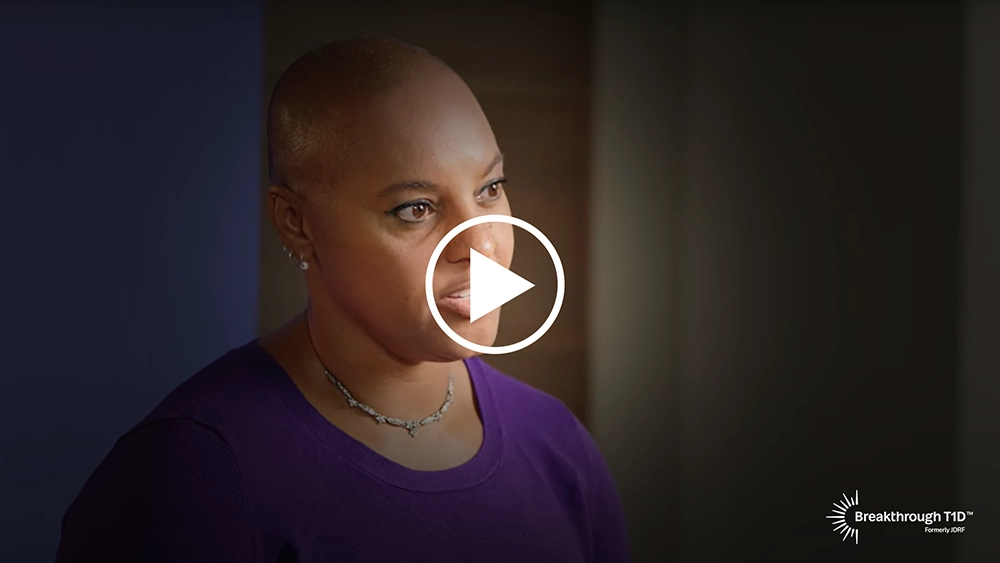
2024 was certainly a year of transformation. We recognized 50 years of grassroots fundraising and advocacy in Canada and in November we became Breakthrough T1D™ Canada. And while we now have a new name and look, our mission remains the same. We are as steadfast as ever about reaching our ultimate goal, a world free from type 1 diabetes (T1D).
Watch: We are Breakthrough T1D
And it is always because of our incredible community of donors, volunteers, and supporters that we never wavered in our mission, seeing progress and breakthroughs across all fields of T1D research. And with successful events and advocacy initiatives across the country, we continued to strengthen our relationship with the amazing T1D community.
From the generosity of our donors, Breakthrough T1D Canada witnessed another transformative year– committing substantive funding to research, developing our partnerships in academia with new fellowships and grants, continuing to support both newly diagnosed families, and our adult T1D community, reinforcing our commitment to being there for anyone living with T1D at any age and any stage of their journey.
And while we work relentlessly towards cures, we continue to try to improve the lives today of the estimated 300,000 Canadians with T1D, through research, advocacy and community engagement.
Highlights from the past year included:
- Before transitioning to our new name, we recognized 50 years of JDRF in Canada and shared stories from people who have been living with T1D for over 50 years. Read their stories.
- Launched our Mental Health + Diabetes Community Grants.
- Supporting a novel training award program in Canada that will build capacity for the future of T1D research in Canada through support of racialized women that have been underfunded in academic research.
- Globally, together with our affiliates in the United States, United Kingdon, Australia, Netherlands and Israel we are funding more trainees than before.
- Convening a successful Kids or A Cure event, bringing youth living with T1D from across the country to meet MPs and Senators in Ottawa to advocate for increased research funding.
- Advocating with partner agencies for a National Pharmacare Plan to address gaps in insulin and diabetes device coverage.
- Reaching thousands of Canadians affected by T1D through our Breakthrough T1D Education Series, bringing experts into their homes to discuss topics important to them.
- Continued support to newly diagnosed families and adults through our Bag of Hope and programs
- Provided connection and support through our Breakthrough T1D Connection series, community events and peer support programs.
- Bringing our community together at our Walk, Ride, and Cocktails for a Cure events.
- Continued progress with our $100 Million Campaign to Accelerate thanks to donor-enabled initiatives like the Triple Match to research through our partnership with the CIHR, generous donors like those working to establish the Brendan Hunt Diabetes and Mental Health Fund, and dedicated campaign volunteers and long-time supporters like Bonnie Barber.
T1D research highlights
In cell replacement:
- Breakthrough T1D Canada and Stem Cell Network announced the third recipient of the J. Andrew McKee Fellowship in Type 1 Diabetes and a fourth fellowship opportunity launched.
- Thanks to donors to the $100M Campaign to Accelerate, the Breakthrough T1D Centre of Excellence at UBC marks three years of innovation in type 1 diabetes cure research.
- Exciting updates from Vertex stem cell-based therapy clinical trials.
- The development of a new dedicated webpage to cell therapy and research updates and record attendance at our Cell Therapy Education Session.
- Awarding the inaugural Breakthrough T1D Clinician Investigator Fellowship to Dr. Ahsen Chaudhry to support his research and clinician training in islet transplantation.
In disease-modifying therapies:
- Psoriasis drug shows promise for treating type 1 diabetes.
- Breakthrough T1D and Integrated Nanotherapeutics collaborate to advance development of an immune tolerizing therapeutic to treat T1D.
In treatments to improve lives:
- The Breakthrough T1D-CIHR Partnership to Defeat Diabetes announce 5 new grants in Knowledge Mobilization, to provide researchers and knowledge users the opportunity to work together to use research evidence to improve health services, programs, and policies.
- Funding programs devoted to improving mental health care and outcomes for people with T1D.
- Renewed our funding of the BETTER project, a Canadian research initiative aimed at improving the lives of people with T1D.
In screening:
- Breakthrough T1D Canada and Sanofi Canada partner to raise awareness about autoimmune type 1 diabetes and the critical role of screening in its early detection.
- Continued work by CanScreen T1D, a new Canadian T1D screening research consortium led by Dr. Diane Wherrett.
- Breakthrough T1D continues to help facilitate screening for relatives of those with T1D across Canada via TrialNet.
In clinical trials:
- Launched the Breakthrough T1D Clinical Trials Finder to make finding T1D clinical trials recruiting in Canada easier and simpler – clinicaltrials.breakthroughT1D.ca.
- Continued to raise awareness of the importance of clinical trials for moving forward critical T1D research through social media and an Education Series event.
To read more about research updates and stories of people living with T1D, please visit www.breakthrought1d.ca/blog.
As we head into 2025, we pause and reflect on how truly grateful we are for the support of our donors, volunteers and the commitment of the T1D community. Thank you! Together, as we drive toward curing type 1 diabetes, we help to make every day better for the people living with it.
